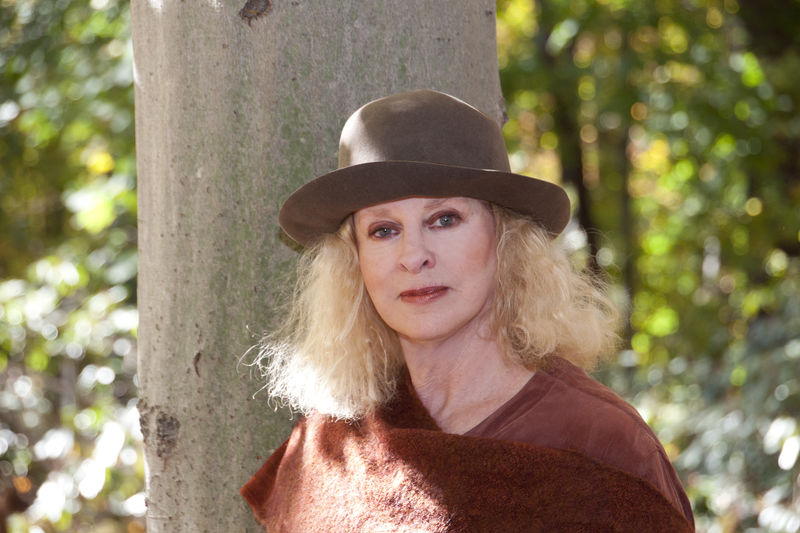ABINGTON, Pa. -- Linda Patterson Miller, the 2011-12 Penn State laureate and professor of English at Penn State Abington, is sharing her thoughts and observations of her laureate experience as she journeys across the Commonwealth aiming to engage people in the beauty of the humanities; specifically early 20th-century American literature and art. “Literary Landings” is a travelogue scheduled to appear periodically during the fall 2011 and spring 2012 semesters on Penn State Live and in Penn State Newswires. “In the Chapel of Art” Miller reflects on an encounter with three Hemingway aficionados and addresses a question she is often asked: "Why Hemingway?" In video link http://bit.ly/nVOzuO see Miller as she provides some background for understanding the transformative power of Hemingway's art.
***
Literary Landings with the Penn State Laureate: In the Chapel of Art
By Linda Patterson Miller, 2011-12 Penn State laureate
October 7, 2011
En route to my September travels as “laureate-in-residence” in western Pennsylvania, I spent time at Penn State Altoona. As I descended the circular stairway into the Edith Davis Eve Chapel, where I was to speak on “Ernest Hemingway in Letters, Literature and Life,” I encountered three elderly gentlemen who were carefully making their way into the building with walkers and canes. They were palpably excited. They had traveled from their Veterans’ Home in nearby Hollidaysburg, Pa., drawn to the lecture by their love of Hemingway. They had read everything of his, they told me, and they could not wait to talk about him more. “Nobody wrote about life and war the way he did,” one said emphatically.
They had arrived early and sat themselves in the front row. I reminded those who gravitated toward the back rows that, as a minister’s daughter, I had always been required to sit visibly in the front row. No back-benchers, either in my father’s church or in the Altoona chapel where we had gathered to meet Hemingway and the Lost Generation.
During my appearances thus far as Penn State laureate, I have often been asked directly, “Why Hemingway?” I respond that Hemingway is both one of the most misunderstood American artists and one of the most important. We call him the "Father of Modern American Prose" because he changed the way writers wrote.
Most writers today acknowledge their debt to Hemingway and the way he has influenced their style. Essentially, Hemingway sought to convey the emotional truth of what it means to be human. He studied the Modernist painters in Paris and wanted to write the way the painters painted. He recognized that their paintings unsettled viewers in their new techniques that distorted traditional perspectives. Hemingway adopted some of those techniques, including omission and cubism, so as to create a world centered on emotions rather than physicality.
Reading Hemingway's best stories is like stepping into a room where you feel that something has happened that you can't quite pin down. Unfortunately, Hemingway's iconic image gets in the way of people actually reading his works. They tend to see the macho persona (the guy who liked to fish and hunt and even fight) and fail to recognize that what Hemingway really captures in his art is the human condition, for both men and women.
And so, as we continued to talk about Hemingway in that Altoona chapel, I reflected on how fitting it was that I, too, not unlike my father, was on the mission field. It might not be the mission my father would have envisioned, but it is the same mission that Hemingway and his Lost Generation colleagues -- those seekers of truth in the aftermath of a fractured, war-torn world -- embraced, and perhaps what those three Hemingway aficionados from Hollidaysburg knew.
Archibald MacLeish, who had given up a partnership in a Boston law firm to go to Paris to write poems, said it best for all of them. “It was the art I owed.” As he concluded, “There is no art to come: there’s only art -- the need, the now, the presence, the necessity . . . the sun.”
As the late afternoon sun filtered through the cylindrical stained glass windows of the Edith Davis Eve Chapel, we watched as the stunning splash of color, rendered cubistically, added its own modernist backdrop to our ongoing discussion about the ways that art gives us back ourselves.
To comment or to ask the laureate a question, contact Linda Miller at [email protected].
To learn more about the Penn State laureate and Linda Miller go online to laureate.psu.edu and/or live.psu.edu/tag/linda_miller.
